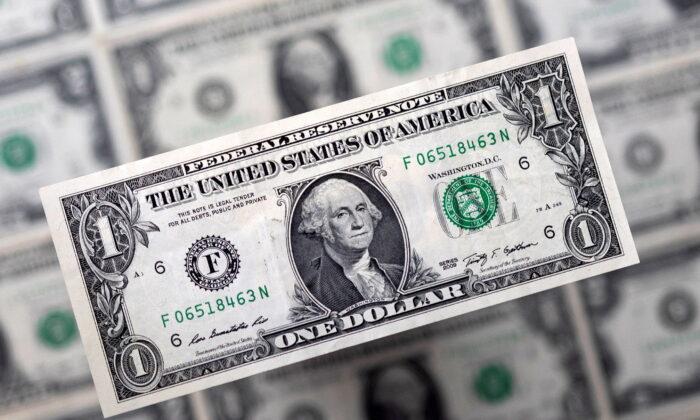The U.S. dollar hit a 20-year high on April 28 as rival global currencies such as the Japanese yen, the British pound, and the euro suffered a major decline in value.
The shakeup coincided with the Russian government cutting off gas supplies to Poland and Bulgaria on April 27 because those countries refused to pay in rubles, a recent demand from Russia to its trade partners in response to Western sanctions over the war in Ukraine.
The dollar index rose 0.8 percent to 103.83, its highest point since December 2002, and has been up 10 percent since mid-November 2021, with the majority of its gains made over the past three months.
The previous week, the index rose 0.4 percent to a level not seen since late March 2020.Confidence in the greenback has been boosted by the Federal Reserve’s more hawkish stance than the rest of its peers in fighting rising inflation.
The Fed is expected to hike rates by 50 basis points at its May 3–4 meeting, with additional increases in June and July.
The euro briefly hit a five-year low of $1.05 with a 5 percent loss for the month, making it the worst blow to the European currency since early 2015.
Some analysts speculate that the decline in the euro could set the common currency to be on course toward parity with the dollar, which hasn’t happened since 2002.
On April 28, the dollar rose past the key level of 130 yen for the first time since 2002, after the Bank of Japan, like its counterparts in London, stuck to a dovish rate policy. The move by the BOJ triggered a warning from Japan’s Ministry of Finance not to push the yen too far.
The BOJ gave an “all clear” to continue selling the yen, Lee Hardman, a currency analyst at MUFG Bank in London, told Reuters.
Japan’s warning triggered a sell-off that allowed the dollar to soar by nearly 2 percent against the Japanese currency, at 131 yen to the dollar.
Investors’ concerns over declining Chinese growth have raised further demand for the dollar, damaging the outlook for foreign states wishing to do business with the CCP.Beijing’s strategy of cutting off the key financial hub of Shanghai from the rest of the world due to COVID-19 is hurting the country’s export market.





